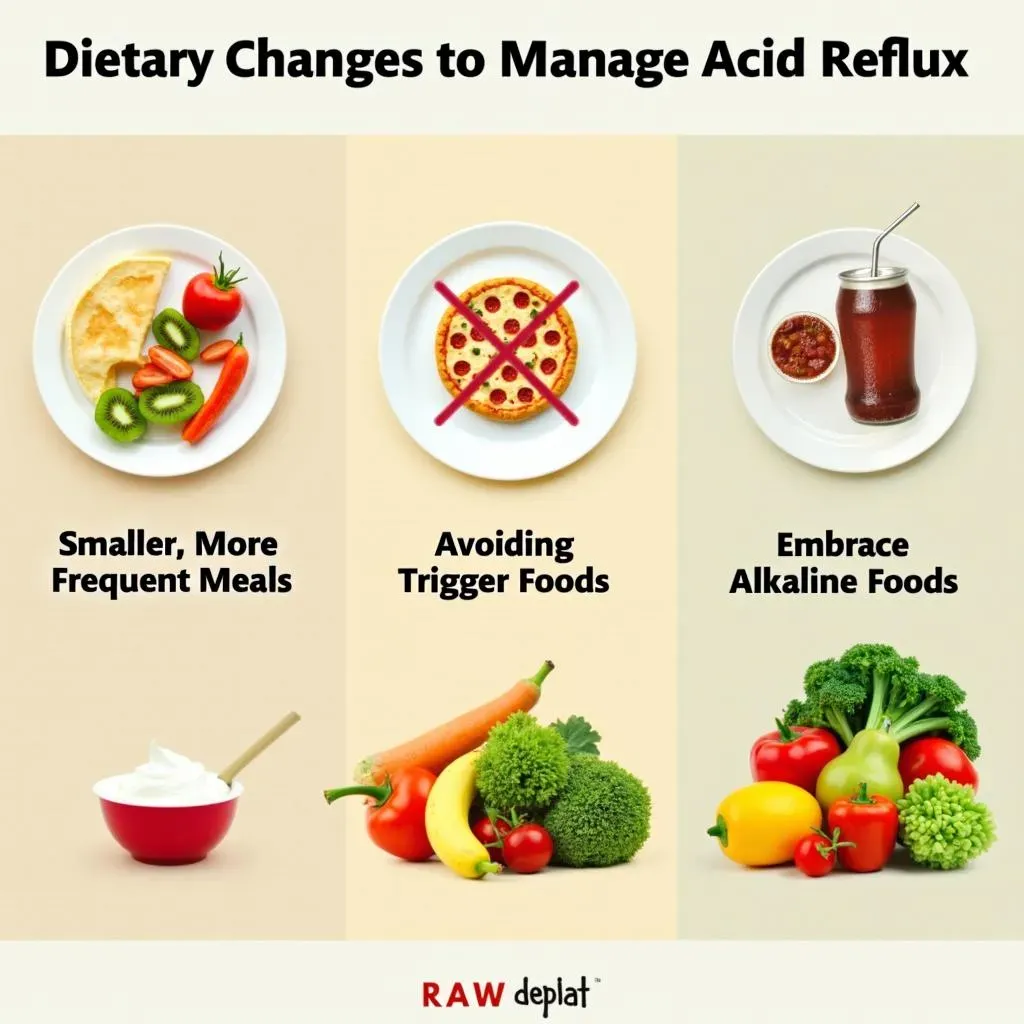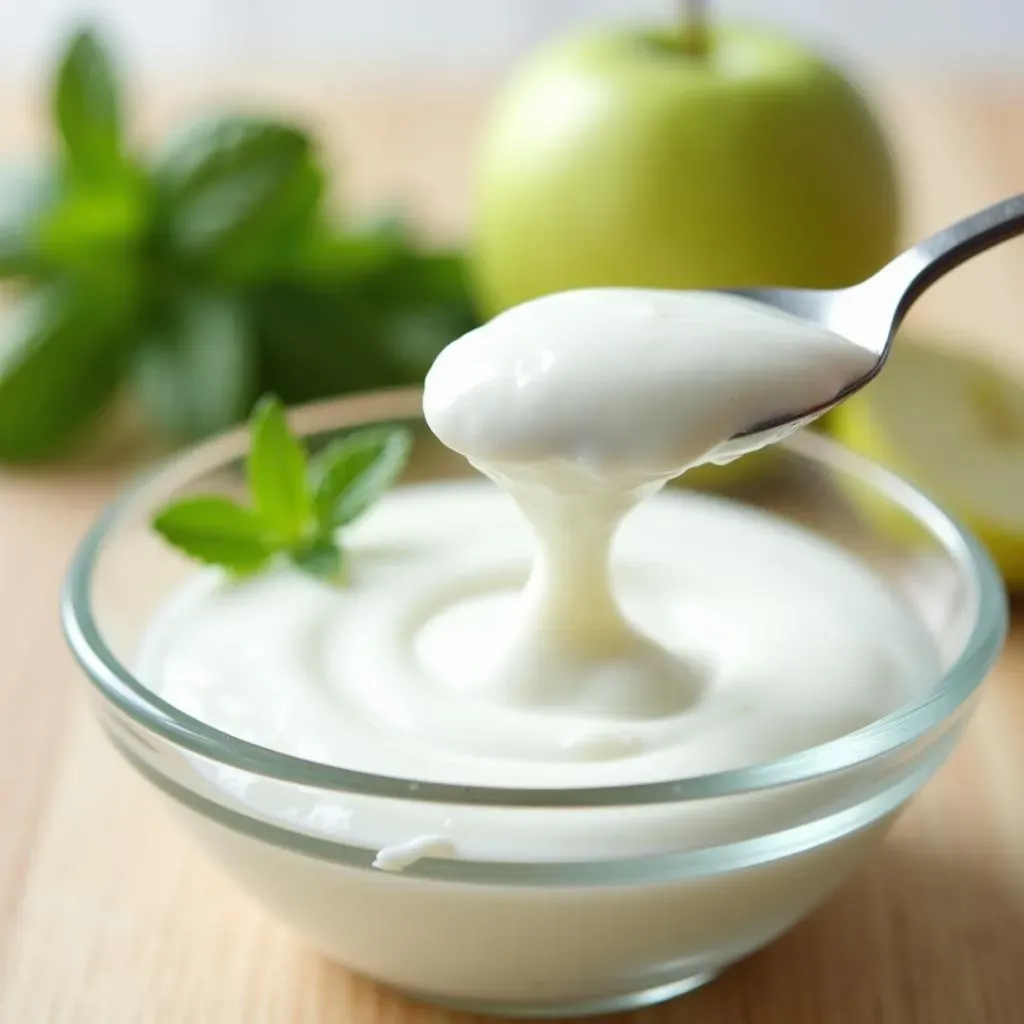Table of Contents
Dealing with the fiery discomfort of acid reflux? You're not alone. Many search for dietary changes to soothe that burning sensation, and one food that often pops up is yogurt. But is it truly a friend or foe when it comes to acid reflux? Specifically, we're diving deep into the world of low fat yogurt for acid reflux. Does it really calm the burn, or could it be secretly fueling the fire? This article will break down the science behind acid reflux, explore how different types of yogurt affect your symptoms, and guide you toward making informed choices. We'll uncover why the fat content matters, which yogurt varieties are your best bet, and how to incorporate this dairy delight into a comprehensive acid reflux management plan. Ready to find out if low fat yogurt is the answer to your heartburn woes? Let's get started!
Understanding Acid Reflux and Its Triggers

Understanding Acid Reflux and Its Triggers
What is Acid Reflux, Really?
so picture this: your stomach's like a little cauldron of acid, right? It needs that acid to break down food. But sometimes, that acid decides to take a field trip up your esophagus, that tube connecting your mouth to your stomach. When that happens, bam! You've got acid reflux, also known as heartburn. It's that burning sensation in your chest that can creep up your throat and leave a sour taste in your mouth. Not fun, I know. It's not just about *what* you eat, but *how* your body handles it. Some people have weaker lower esophageal sphincters (LES), that little muscle that's supposed to keep the acid in its place. When that LES gets lazy, acid can sneak past.
Think of it like this: your stomach is a secure vault, and the LES is the bouncer at the door. When the bouncer's doing their job, everything's cool. But if they're slacking off, anyone can waltz in – or, in this case, acid can creep up. And trust me, that acid is *not* a welcome guest. Frequent acid reflux can lead to some serious issues down the line, like esophagitis (inflammation of the esophagus) or even Barrett's esophagus, which increases your risk of esophageal cancer. So, taking it seriously is key.
Common Culprits: Foods That Fan the Flames
Alright, let's talk about the usual suspects – the foods that are notorious for triggering acid reflux. Fatty foods are definitely high on the list. They take longer to digest, which means your stomach is working overtime, and there's more pressure on that LES. Then there are the acidic foods, like citrus fruits (oranges, lemons, grapefruits) and tomatoes. These can directly irritate your esophagus. Spicy foods, like chili peppers and garlic, can also be major offenders. They contain compounds that can relax the LES and increase acid production.
But it's not just about individual foods. Sometimes, it's the way you combine them. A greasy pizza with pepperoni and extra cheese? A double whammy! And let's not forget about beverages. Coffee, alcohol, and carbonated drinks can all contribute to acid reflux. Coffee can stimulate acid production, alcohol can relax the LES, and carbonation can increase pressure in your stomach. So, if you're prone to heartburn, it's worth keeping a food diary to track what triggers your symptoms. Everyone's different, so what sets off your reflux might not bother someone else. For example, my sister can't even look at a tomato without reaching for the antacids, while I'm perfectly fine with them. Trial and error, my friend, trial and error.
Trigger Food Category | Examples | Why It's a Trigger |
|---|---|---|
Fatty Foods | Fried foods, fatty meats, full-fat dairy | Slow digestion, increased pressure on LES |
Acidic Foods | Citrus fruits, tomatoes, vinegar | Directly irritate the esophagus |
Spicy Foods | Chili peppers, garlic, onions | Relax LES, increase acid production |
Beverages | Coffee, alcohol, carbonated drinks | Stimulate acid production, relax LES, increase stomach pressure |
Why Low Fat Yogurt Might Help Acid Reflux

Why Low Fat Yogurt Might Help Acid Reflux
The Probiotic Powerhouse
So, why all the buzz about yogurt and acid reflux? Well, it all comes down to probiotics. These are the "good" bacteria that live in your gut and help keep things running smoothly. They can improve digestion, reduce inflammation, and even strengthen that LES muscle we talked about earlier. Some studies have suggested that probiotics can reduce the frequency and severity of acid reflux symptoms. It's like adding reinforcements to your gut army, helping them fight off the acid invaders.
But here's the thing: not all yogurts are created equal. To get the full probiotic benefits, you need to choose a yogurt that contains live and active cultures. Look for the "Live & Active Cultures" seal from the National Yogurt Association. And remember, probiotics are living organisms, so they need to be kept cold to stay alive. Make sure your yogurt is properly refrigerated.
Fat Content and Your LES
Now, let's talk about fat. Remember how fatty foods can trigger acid reflux? That's because fat slows down digestion and puts more pressure on the LES. That's where the "low fat" part of low fat yogurt comes in. By choosing a low-fat or non-fat option, you're reducing the risk of triggering your symptoms. It's like giving your stomach a break and making it easier for the LES to do its job.
Think of it like this: your stomach is a crowded dance floor, and the LES is the bouncer trying to keep things under control. If there's a ton of fatty food on the dance floor, it gets chaotic, and the bouncer has a harder time keeping the peace. But if the dance floor is less crowded (i.e., you're eating low-fat foods), the bouncer can manage things more easily. So, when it comes to yogurt and acid reflux, less fat is definitely more.
Yogurt Type | Fat Content | Potential Impact on Acid Reflux |
|---|---|---|
Whole Milk Yogurt | High | May worsen symptoms due to slowed digestion and increased LES pressure. |
Low Fat Yogurt | Moderate | Less likely to worsen symptoms compared to whole milk yogurt. |
Non-Fat Yogurt | Very Low | Least likely to worsen symptoms; may be a better choice for those with acid reflux. |
A Soothing Effect
Beyond the probiotics and low fat content, yogurt itself can have a soothing effect on the esophagus. It's cool, creamy texture can help coat and protect the irritated lining, providing temporary relief from that burning sensation. It's like applying a cool compress to a sunburn – it doesn't cure the problem, but it can definitely ease the discomfort.
Some people find that eating a small amount of low fat yogurt after a meal can help prevent acid reflux symptoms from developing. It's like a pre-emptive strike against the acid invaders. Of course, everyone's different, so what works for one person might not work for another. But it's definitely worth a try!
Best Types of Low Fat Yogurt for Acid Reflux Relief

Best Types of Low Fat Yogurt for Acid Reflux Relief
Plain, Unsweetened Low Fat Yogurt: Your Best Bet
When it comes to low fat yogurt for acid reflux, plain and unsweetened is the way to go. Flavored yogurts often contain added sugars and artificial sweeteners, which can actually worsen your symptoms. Sugar can feed bad bacteria in your gut, leading to inflammation and increased acid production. And some artificial sweeteners have been linked to digestive issues. So, stick with the basics: plain, low-fat yogurt with live and active cultures. You can always add your own healthy toppings, like berries or a drizzle of honey (in moderation, of course).
Think of it like this: you're trying to build a solid foundation for your gut health, and plain yogurt is the cornerstone. Flavored yogurts are like adding unnecessary bells and whistles that can actually weaken the structure. Keep it simple, keep it clean, and your gut will thank you for it.
Greek Yogurt: A Tangy Twist
Greek yogurt is another excellent option for acid reflux relief. It's strained to remove whey, resulting in a thicker, creamier texture and a higher protein content. The higher protein can help you feel fuller for longer, which can prevent overeating and reduce pressure on your LES. Greek yogurt also tends to be lower in lactose than regular yogurt, making it easier to digest for those with lactose intolerance. Plus, it still packs a probiotic punch!
However, Greek yogurt can be a bit tangier than regular yogurt, which might not be ideal for everyone with acid reflux. If you're sensitive to acidic foods, start with a small amount to see how you tolerate it. You can also mix it with a little bit of honey or fruit to mellow out the tang. But remember, moderation is key!
Yogurt Type | Pros | Cons |
|---|---|---|
Plain, Unsweetened Low Fat Yogurt | Simple, no added sugars or artificial sweeteners, good source of probiotics. | Can be a bit bland on its own. |
Greek Yogurt | Higher in protein, lower in lactose, creamy texture. | Can be tangier than regular yogurt, which may not be suitable for everyone. |
Icelandic Yogurt (Skyr): The Protein Powerhouse
Icelandic yogurt, also known as skyr, is similar to Greek yogurt but even thicker and creamier. It's also incredibly high in protein, making it a great choice for keeping you satisfied and preventing overeating. Skyr is traditionally made with skim milk, so it's naturally low in fat. And like Greek yogurt, it's strained to remove whey, resulting in a lower lactose content.
Skyr is a fantastic choice if you're looking for a protein boost and a creamy texture. It's also a versatile ingredient that can be used in smoothies, dips, and even as a substitute for sour cream. Just be sure to choose a plain, unsweetened variety to avoid added sugars and artificial sweeteners.
Other Dietary Changes to Manage Acid Reflux with Low Fat Yogurt

Other Dietary Changes to Manage Acid Reflux with Low Fat Yogurt
Smaller, More Frequent Meals
One of the simplest yet most effective dietary changes you can make is to switch to smaller, more frequent meals. Instead of eating three large meals a day, try eating five or six smaller ones. This reduces the amount of food in your stomach at any given time, which can alleviate pressure on the LES and prevent acid from creeping up. It's like easing the load on your stomach, making it easier to manage its contents without causing a reflux rebellion.
Think of your stomach as a bus. If you cram too many passengers (food) onto the bus at once, it's going to be uncomfortable and chaotic. But if you spread out the passengers over several trips, everyone will be much more comfortable. Same goes for your stomach! Smaller, more frequent meals can make a big difference in managing your acid reflux symptoms.
Steering Clear of Trigger Foods
We've already talked about some common trigger foods, but it's worth reiterating the importance of identifying and avoiding your personal triggers. Keep a food diary to track what you eat and how it affects your symptoms. Pay attention to patterns and see if you can pinpoint any specific foods or combinations that consistently cause you problems. Once you've identified your triggers, do your best to avoid them. It might be tough at first, but your esophagus will thank you for it!
Remember, everyone's different, so what triggers your acid reflux might not bother someone else. It's all about finding what works for you. For example, my best friend can't tolerate onions, while I can eat them with no problem. It's all about listening to your body and paying attention to its signals.
Dietary Change | Explanation | Potential Benefit |
|---|---|---|
Smaller, More Frequent Meals | Eating smaller meals more often throughout the day. | Reduces pressure on the LES, preventing acid reflux. |
Avoiding Trigger Foods | Identifying and eliminating foods that worsen your symptoms. | Prevents irritation of the esophagus and reduces acid production. |
Embrace Alkaline Foods
While avoiding acidic foods is important, it's also a good idea to incorporate more alkaline foods into your diet. These foods can help neutralize stomach acid and reduce the risk of acid reflux. Some examples of alkaline foods include leafy green vegetables, bananas, melons, and nuts. They can help balance the pH level in your stomach and keep things in check.
Think of it like this: your stomach is a chemistry lab, and you want to maintain a neutral pH level. Acidic foods throw off the balance, while alkaline foods help restore it. By incorporating more alkaline foods into your diet, you're creating a more harmonious environment in your stomach and reducing the likelihood of acid reflux.
The Final Scoop on Low Fat Yogurt and Acid Reflux
So, is low fat yogurt a heartburn hero or a digestive disaster? The answer, as with many things related to acid reflux, is: it depends. For many, the probiotics and soothing texture of low fat yogurt can offer relief. However, it's crucial to choose the right type – plain, with no added sugars or acidic fruits – and to listen to your body's signals. Low fat yogurt can be a valuable tool in managing acid reflux when combined with other dietary and lifestyle adjustments. If you're still unsure, chat with your doctor or a registered dietitian to personalize your approach and find the perfect balance for your gut.
